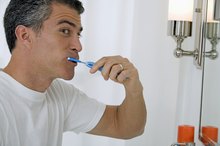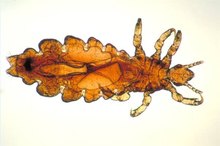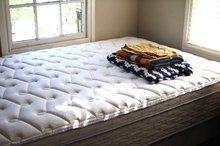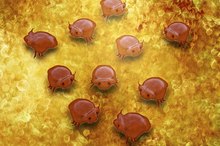How to Clean a House of a Pinworm Infestation
Pinworm infections are highly contagious. They can easily be transmitted among household members. Tiny pinworm eggs that are accidently transferred to the hands, onto clothing or around the house can reinfect household members.
If you are experiencing serious medical symptoms, seek emergency treatment immediately.
Reinfestation can occur through inadvertently swallowing pinworm eggs or through inhaling eggs that are in the air. According to the Center for Disease Control, pinworm eggs survive away from the body for two to three weeks. Controlling a pinworm infection involves taking medication prescribed by a physician to kill the pinworms and preventing reinfection. Practicing regular hand washing and housecleaning can significantly reduce the likelihood of pinworm reinfestation.
Shower each morning to remove pinworm eggs from the body. A shower is preferable to a bath, because there is a possibility of pinworm contamination from eggs floating in the bath water. Clean the shower thoroughly after use.
How Do People Get Pin Worms?
Learn More
Clip fingernails short to prevent the likelihood of pinworm eggs becoming trapped under the fingernails.
Wash hands regularly with soap and warm water. Remember to wash hands after using the bathroom, before touching your face and before touching food.
How to Sterilize Against Pinworm Eggs
Learn More
Wash all clothing in warm or hot water. Pay special attention to wash underclothing, which is commonly contaminated with pinworm eggs. Wear disposable gloves when handling clothing to prevent hand contamination.
Wash all bedding in warm or hot water. Do not shake bedding or you could release pinworm eggs into the air where they could be inhaled. Wear disposable gloves when handling bedding to prevent hand contamination.
Vaccum and mop all floors daily.
Wash walls and counter surfaces with warm water and a mild soap.
Clean toilet seats after every use.
Tips
Human pinworms (Enterobius vermicularis) are not the same worms that infect pets.
Related Articles
References
- Centers for Disease Control and Prevention. Pinworm Infection FAQs. Updated January 10, 2013.
- KidsHealth. Pinworm. Updated July 2017.
- Schroeder JC, Jones D, Maranich A.Peripheral Eosinophilia Found in Pediatric Enterobius vermicularis Infections. Clin Pediatr (Phila). 2019 Jan;58(1):13-16. doi:10.1177/0009922818805193.
- Yang CA, Liang C, Lin CL, Hsiao CT, Peng CT, Lin HC, Chang JG Impact of Enterobius vermicularis infection and mebendazole treatment on intestinal microbiota and host immune response. PLoS Negl Trop Dis. 2017 Sep 25;11(9):e0005963. doi:10.1371/journal.pntd.0005963.
Resources
Tips
- Human pinworms (Enterobius vermicularis) are not the same worms that infect pets.
Writer Bio
Rose Kivi has been a writer for more than 10 years. She has a background in the nursing field, wildlife rehabilitation and habitat conservation. Kivi has authored educational textbooks, patient health care pamphlets, animal husbandry guides, outdoor survival manuals and was a contributing writer for two books in the Uncle John’s Bathroom Reader Series.









